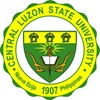Southern Luzon State University (multiple campuses)
University Profile
Get a quick snapshot of the university's key details.
| University Name | Southern Luzon State University (multiple campuses) |
|---|---|
| Acronym | SLSU |
| Year Established | 1964 |
| Motto | Building People, |
| Motto in English | Building People, |
| Governing Type | Public |
| Student Body | Co-education |
| Highest Degree | Doctorate |
| Campus Type | Rural |
| Colors | Green and White |
Location
The university is located in Lucban, Quezon. Find the address and map of the university below.
| Address | Brgy. Kulapi, Lucban,Quezon (Main Campus), Philippines, Lucban, Quezon, Philippines |
|---|---|
Contact
Connect with the university easily! Find their contact details.
| Phone | 88-02-9882990 |
|---|---|
| Fax | 88-02-9882970 |
Scholarship and Financial Aids
There is no information found on scholarships or financial aids offered by Southern Luzon State University (multiple campuses). You may like to visit their website for more details.
Related Articles
Stay informed with the following articles related to the university or higher education in Philippines.
Discover the state of higher education in the Philippines, including statistics, the number of universities, and unique features. Learn about the growing number of international students and what opportunities they can expect from this dynamic education system. [Read More]
Every year, over twenty-five thousand foreigners study in the Philippines says the Bureau of Immigration. If you are really looking for a place to get academic excellence, then coming to this noble country would be a better idea. [Read More]

